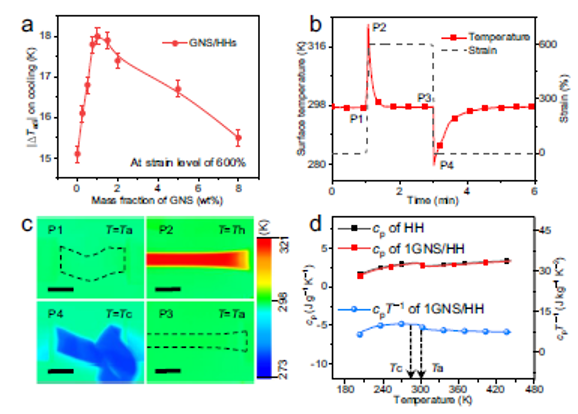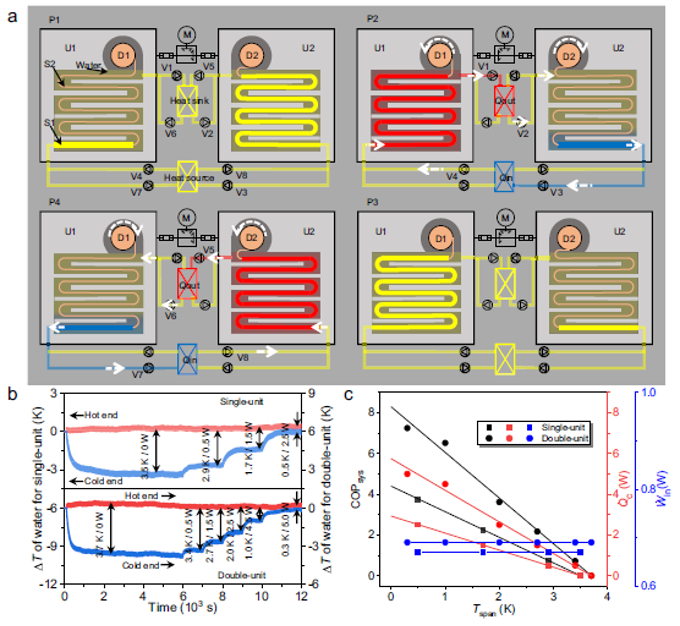
Recently, Professor Xiong Chuanxi’s team has made significant progress in the research on the elastocaloric effect for solid-state cooling in polymer materials. The finding, titled “Shearo-caloric effect enhances elastocaloric responses in polymer composites for solid-state cooling,” has been published in Nature Communications. Wuhan University of Technology is the primary affiliation, and the first authors are our PhD students Zhang Shixian and Fu Yuheng. Professor Xiong Chuanxi and Professor Wang Qing from Pennsylvania State University are the co-corresponding authors.
Amidst growing concerns over global climate change exacerbated by the greenhouse effect and extreme weather events caused by refrigerant leakage , there is an urgent need for refrigerants and cooling technologies that are both environmentally friendly and energy efficient, in line with the “dual carbon” objectives.
Over the past two decades, extensive research has been conducted on solid-state cooling materials and technologies with zero greenhouse potential. While shape memory alloys exhibiting elastocaloric effects are among the most advanced solid-state cooling materials, their practical application is limited by the GPa-level driving stress. In response, Professor Xiong’s team developed a series of high-entropy solid-state refrigerants with MPa-level driving stress using polymer composite materials and proposed the concept of the shearo-caloric effect for the first time. By introducing carbon nanofillers into polystyrene-b-(ethylene-co-butylene)-b-polystyrene (SEBS) block copolymers, the polymer elastic network was reconstructed. The shearing elongation of intermolecular chains caused by the relative movement between nanofiller layers significantly enhanced the elastocaloric effect of the original matrix. As a result, the elastocaloric performance of the polymers, measured via infrared thermography, now ranks among the top three globally.
Moreover, addressing the large deformation characteristics inherent to polymers, the team designed and verified a dual-unit cooling device and heat pump system with energy recovery functionality, demonstrating its potential advantages of large deformation polymer refrigerants. With a system coefficient of performance (COP) reaching as high as 8.3, this design effectively dispels international doubts regarding the efficiency of solid-state cooling technology.

Figure 1 Elastocaloric effect of SEBS composite materials

Figure 2 Design and performance of the waste heat recovery refrigeration system
Original link: https://doi.org/10.1038/s41467-024-50870-4
Written by: Fu Yuheng, Xiong Chuanxi
Reviewed by: Shen Guofang
Rewritten by: Lin Qiaochu
Edited by: Liang Muwei, Li Tiantian
Source: School of Materials Science and Engineering
|
|